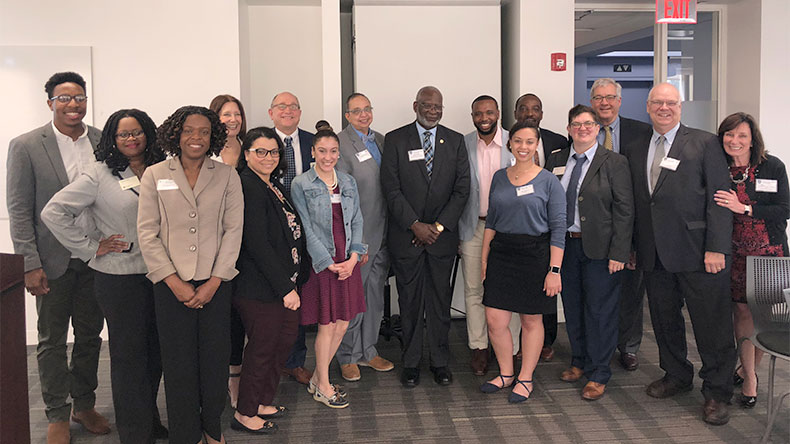Former Surgeon General Satcher is Keynote at "Building a Diverse Workforce for Behavioral Health" on May 3Around Campus

Former Surgeon General Satcher Keynote at William James College Seminar
“I was a victim, but I became a confronter,” said Dr. David Satcher, former US Surgeon General and now head of the Satcher Health Leadership Institute, as he encouraged a distinguished clinical, academic, business and government audience at William James College “to confront” the issue of behavioral health disparities head on with a workforce to meet the challenge.
It was not only a morning of inspiring words from pioneers like Satcher, who as Surgeon General authored a landmark report on the nation’s mental health, but also of digging in and testing new ideas for launching a workforce to meet the needs of populations underserved and unserved by a system still not taking culture, color and economics into account.
Said Ronald Walker, COO of Rasky Partners, WJC’s “initiative to bring all key stakeholders together in this effort to develop a comprehensive approach to diversify and build a stronger workforce within the behavioral health community is the right model to pursue.”
The audience, which in addition to Rasky, included advocates, managed care executives, ministers, physicians, corporate CEOs and WJC faculty and Center directors were welcomed by Dr. Nicholas Covino, president of the College, followed by a panel presentation, working group discussion and a presentation by Surgeon General Satcher.
Three panelists presented “Racial and Ethnic Disparities in Mental Health – Translating Empirical Knowledge into a Broad and Effective Workforce." Dr. Margarita Alegria, chief of the Disparities Research Unit at Massachusetts General Hospital; Dr. Esteban Cardemil, professor of psychology at Clark University; and Dr. Natalie Cort, director of the Black Mental Health Academy at William James College addressed the issue from their perspective and understanding.
In turn, the audience was asked to break into groups and tackle questions such as:
- How do we develop a broad and effective behavioral workforce of color?
- Why has this not happened thus far?
- Are there models in other fields for building a racial and cultural diverse workforce?
- Who should care about this?
- Are there obvious partners to help in this endeavor?
- Where might we find funding?
- What should the college pay attention to as it expands its role?
Says Alegria, “I was inspired to see how the various stakeholders, although quite different from one another, were all in agreement about what needed to be done to increase opportunities for people of color and how it could be done (e.g. tax incentives, housing and debt relief programs, mentorship, policy change).”
Topics/Tags
Follow William James College
Media Contact
- Katie O'Hare
- Senior Director of Marketing
- katie_ohare@williamjames.edu
- 617-564-9389
